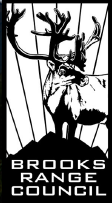The Western Arctic Caribou herd has been on the decline for many years; peaking in 2003 with over 400,000 animals and possibly dropping as low as 200,000 currently. This decline may impact future hunting regulations for both residents and nonresidents. Currently the Western Arctic Caribou herd has a range that is still largely intact, and is not being impacted in the same way other caribou herds are by habitat fragmentation; however this could change with the proposed road to Ambler mining district -increasing the herd’s risk of further decline.
“A caribou herd in northwestern Alaska has been the state’s largest for several years, but its population is on a downward slide and now it may have lost that status.
The Western Arctic Caribou Herd, which peaked in 2003 at 490,000 animals, is likely down to about 200,000 today, and some hunting restrictions could be in the offing, according to experts from the Alaska Department of Fish and Game…
…There is not yet an explanation for the decline. Parrett discussed some hypotheses at the three-day working group meeting. Unusual weather, possibly linked to climate change, is one suspect, he said.
“People are noticing on-the-ground changes,” Parrett said.
Many animals were lost in one recent winter in which there was rain that iced up the landscape and created a barrier to vegetation that caribou eat, he said…
…While habitat fragmentation from logging and other development has hurt caribou herds elsewhere in North America — dramatically so in parts of Canada — that does not seem to be a problem for the Northwestern Alaska herd, Parrett said. For the Western Arctic herd, “The range is largely still intact,” he said. “This is wilderness, compared to everywhere else in the world.”
Read the full article here.
